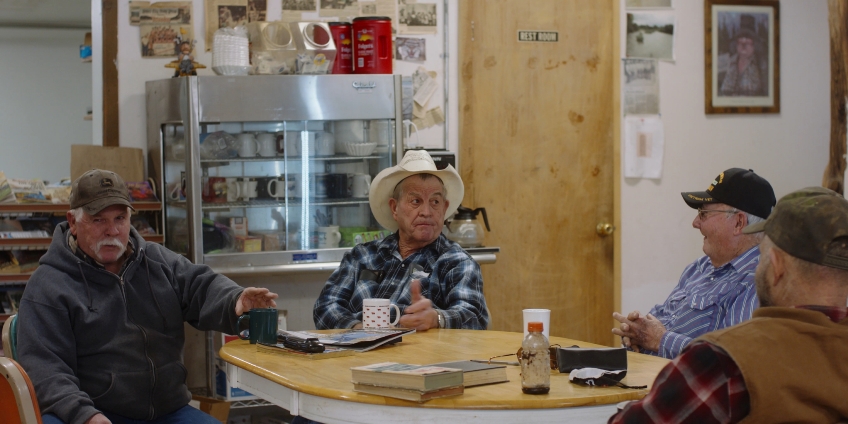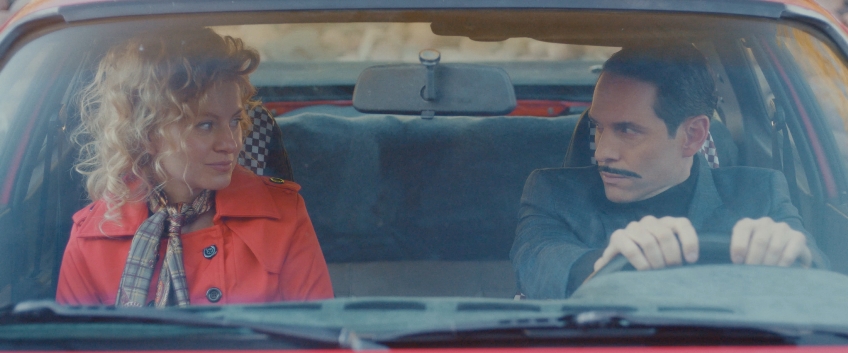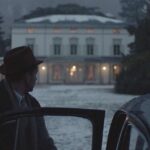Joyce Glasser reviews The Thief Collector (from March 31 on Prime Video), Cert 12, 96 mins.
It’s a shame this film is not getting a cinema release because the theft of Willem de Kooning’s Femme Ochre in 1985 from the University of Tucson Art Museum is one of the weirdest heist movies in an archive full of strange cases. And it’s not money the thief was after, but a painting that, for most people at the time, was just about worthy of hanging in the back room of the Manzanita Ridge Antiques’ guest house in Cliff, New Mexico (NM). Although director Allison Otto and writers Mark Monroe and Nick Andert make a compelling case for who did it, when the painting turned up in 2017 – valued at auction at 160 million dollars – the police and FBI closed the case without making a single arrest.
To say that The Thief Collector is one of those “tip of the iceberg” documentaries that keeps unravelling into the deeper and darker crevices of humanity would not do it justice. For while the filmmakers lead us through the sinuous, at times vertiginous and multi-layered trail of this art theft, they have us stop with the world to reflect on the magnitude of one good deed.
But that good deed comes at the end. The problem is where to start.
You could start this admittedly complicated story anywhere. Why not begin at Tucson’s Art Museum on the University of Arizona’s campus on the day after Thanksgiving, 1985? The campus is deserted over the holiday weekend, but in 1985, the museum was open to the public on the Friday after Thanksgiving Day. When the staff open the empty museum to an eager, early morning thirty-something pair of tourists, they have no idea the couple are heavily disguised. The woman distracts a guard while the man cuts Woman-Ochre out of its frame, rolls it up (damaging the paint) and joins the woman in a hasty retreat in their red or rust colour convertible.
Or, since this is an interstate crime caper, you could start with the police and FBI’s rather lax investigation that closes the case before many questions were answered. Nor do they seem remotely interested in investigating related unsolved crimes, such as a million dollar Native American chief’s blanket taken from the Amerind Museum located in Dragoon Arizona – coincidentally located between Tucson and Cliff.

To be fair, there is not much to go on. Both visitors wore gloves so there are no fingerprints, and the museum has, in 1985, no surveillance cameras. No one recognises the witness sketches, and the stolen painting never surfaces on the market. Jerome and Rita Alter, a couple from Cliff NM, visiting relatives in nearby Silver City, NM and captured in a family picture at Thanksgiving dinner the day before the theft, do however drive a red convertible which museum staff noted. And they went off “hiking” by themselves the Friday morning after Thanksgiving, leaving an unusual blank in their heavily annotated diary.
Or you could start with a portrait of this devoted couple. Jerry, a frustrated, though much-loved music teacher and saxophone jazz player, and Rita, a school speech pathologist who looked like a model, impress their friends and family with photos of their many exotic, to the point of dangerous, holidays: the couple seem to be thrill seekers. The film is conspicuously silent about the couples’ two (it is assumed) children, which might be for legal reasons. Observers note that most of the photos in their house were just of Rita and Jerry.
Or you could start with unassuming Silver City, NM resident Ron Roseman, Rita’s nephew, who finds himself over his head as the executor of the Alter estate when Rita died in June 2017. He was just a kid at the Thanksgiving table in 1985, in awe and half in love with his sexy, confident Aunt Rita.
When the contents of the Alters’ isolated house in Cliff, NM – crammed with travel souvenirs, Native American rugs, paintings (including a hideous series by would-be artist Jerry), and strange outdoor sculptures – are rejected by various museums, Ron sells the contents of the house to Dave Van Auker and Buck Burns of Manzanita Ridge Antiques in Silver City for $2,000. Hidden behind the master bedroom door is a painting neither men like, but they plan to hang it in their guest house.

A Nomad-like traveller, perhaps touring in Georgia O’Keefe land, sees the canvas and offers them the asking price, noting de Kooning’s signature and style. Instead of selling, Van Auker contacts the museum. By this point, the police and FBI caution the staff not to speak to the caller for fear he is connected to the thieves.
Van Auker, on the other hand, is living in fear of his life after learning the value of the painting. He has been hiding the painting behind his sofa, arming himself for self-protection. Van Auker wants nothing more than to be rid of their prize. Here’s where the “good deed” comes in, and when you see what happens in the film you may shed a tear when Van Auker says, ‘I think we got the better end of the deal.’
Or you could start with the artwork itself, painted by the Abstract Expressionist Willem de Kooning in 1955 as part of his controversial “woman” series, marking a return to semi-figurative art, and inspired by his discovery of the art of Chaim Soutine. There is speculation in the film, some persuasive, that Rita, who was attractive with a great body, might have met the womanising de Kooning in NYC, and that Jerry, an amateur painter with delusions of grandeur, was in thrall of the artist who died in 1997 aged 92.
The above are a few ways in which the filmmakers could have started the film. But they choose to begin with a re-enactment (using actors Eric Banks, Hailee Cruzen and Glenn Howerton) of a short story Jerry wrote, entitled The Thrill Seekers which describes a couple’s trip to a museum. The story is contained in Jerry’s self-published book, The Cup and the Lip that also includes the story, The Thief Collector.
In Yiddish, which Alter knew, the Cup refers to the mind and the Lip to the mouth as if to say, “you have to decide what you say and what you don’t.” But it’s also an old proverb – between the cup and the lip much can go array – and in that context is the title of the first book of Charles Dickens’ Our Mutual Friend.
When, after Rita’s death, Jerry’s stories are discovered, they are dismissed by the FBI as evidence. But Van Auker and Buck Burns think they read like confessions.




